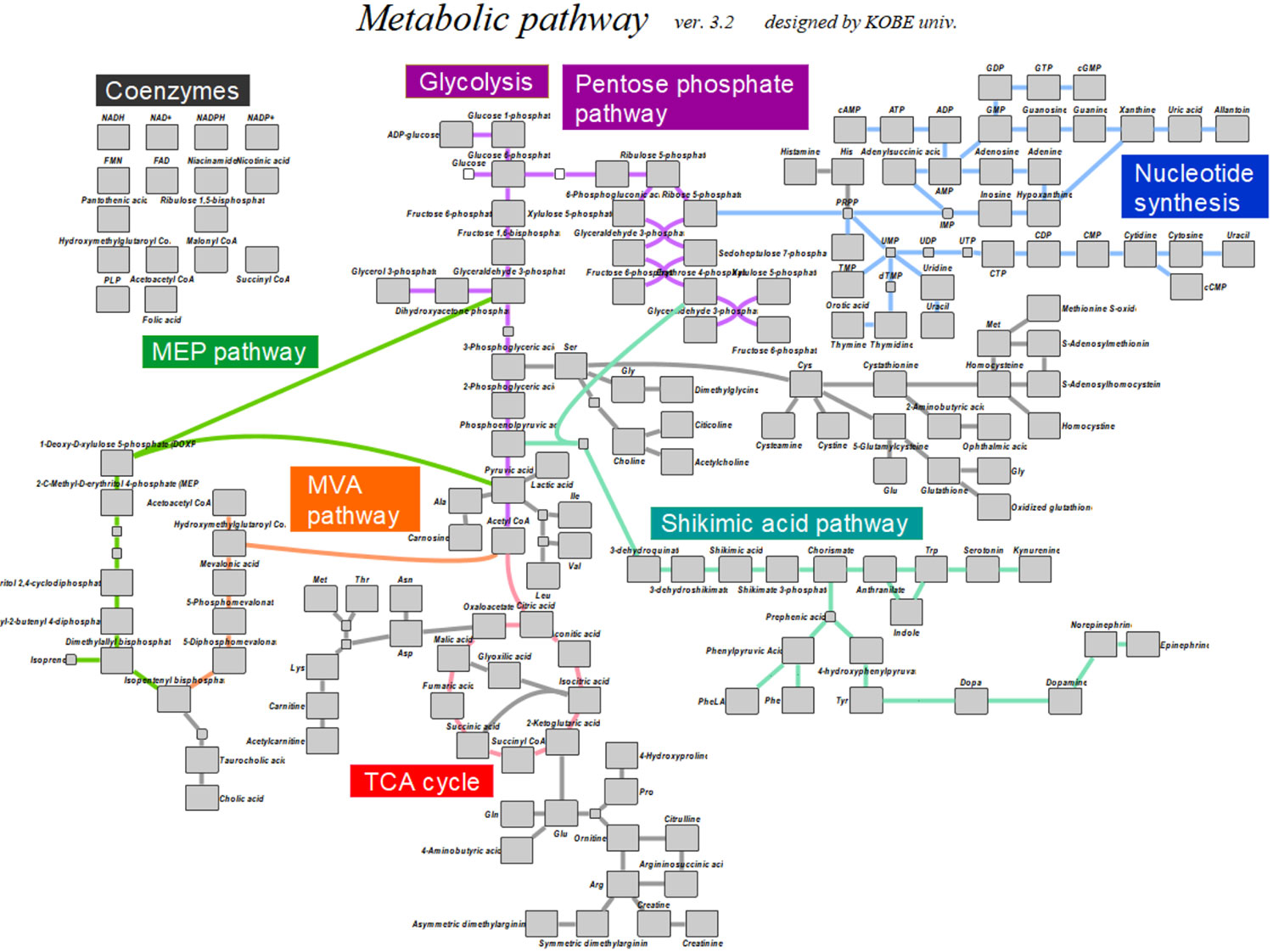High-accuracy Metabolomic Analysis Technology
Tomohisa HASUNUMA
Engineering Biology Research Center, Kobe University


Tomohisa HASUNUMA
Engineering Biology Research Center, Kobe University


This technology provides metabolomic data with the reproducibility and throughput required for smart cell development. It enables the identification of culture conditions and cells suitable for material production and also the identification of bottleneck reactions in metabolic biosynthetic pathways by highly reproducible multi-sample processing and comprehensive detection of water-soluble metabolites using robots. This clarifies the causal relationship between genetic modifications and the material production capacity of cells.
Metabolomic analysis is a technology that can simultaneously identify the pool sizes of various metabolites present in cells. As metabolomic data reflect the growth environment and genetic background of cells, it becomes possible to identify culture conditions and cells suitable for material production by performing metabolomic analysis.
The metabolomic analysis process comprises the pretreatment process for extracting intracellular metabolites from a cell suspension, the metabolite quantitation process using LC-MS/MS, etc., and the data analysis process. Conventionally, the pretreatment process involves complicated manual operations, which has caused data variation. Therefore, we have fully robotized this process, and achieved a processing speed that is 10 times or more faster than that achieved by humans, with higher reproducibility than that achieved by experts.
For the analysis after the pretreatment, the S/N ratio has been improved by constructing an LC-MS/MS system that requires no ion-pairing agents. In addition, the method has enabled the isolation and detection of 158 water-soluble metabolites required for the designing of microbial smart cells.
In the metabolomic analysis, in which the identification and relative quantitation of various metabolites are performed for each sample, the amount of data processing is enormous. Therefore, we are constructing an information analysis system that assists in the process of peak picking from chromatograms and projects the analysis results on a metabolic map.

図1.メタボローム解析用自動前処理ロボット

図2.測定可能な水溶性一次代謝物の代謝マップへの投影例
By obtaining a large amount of highly reproducible metabolomic data through the development of this technology, the metabolic control mechanism, which has been a black box, can be elucidated, and a DBTL cycle that incorporates the mechanism analysis can be developed. The elucidation of the metabolic control mechanism provides extremely useful information for acquiring intellectual property rights for groundbreaking production strains (smart cells) and the production methods. Since this method can be applied to the comprehensive analysis of metabolites secreted extracellularly, it is also effective for the evaluation of production strains during the bioproduction process (calculation of mass balance, etc.).
1) C.J. Vavricka et al. : Trends in Biotechnology, 38(1), 68-82 (2019)
2) T. Hasunuma et al. : ACS Synthetic Biology, 8(12), 2701-2709 (2019)
3) C.J. Vavricka et al. :Nature Communications, 10(1), 2336 (2019)
4) T. Hasunuma et al. :Metabolic Engineering, 48, 109-120 (2018)
Last updated:December 25, 2023